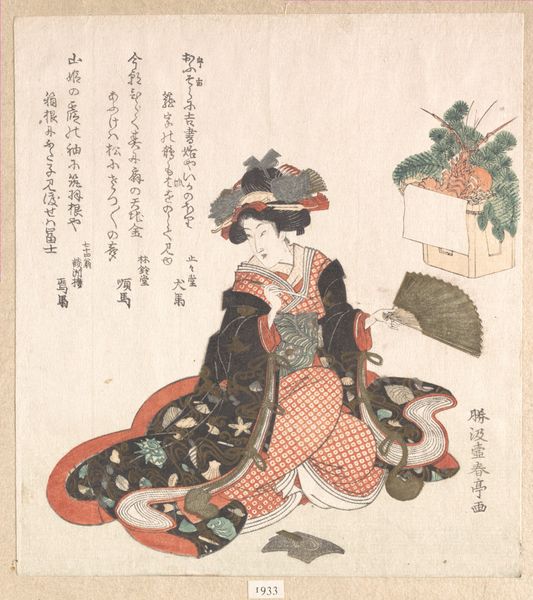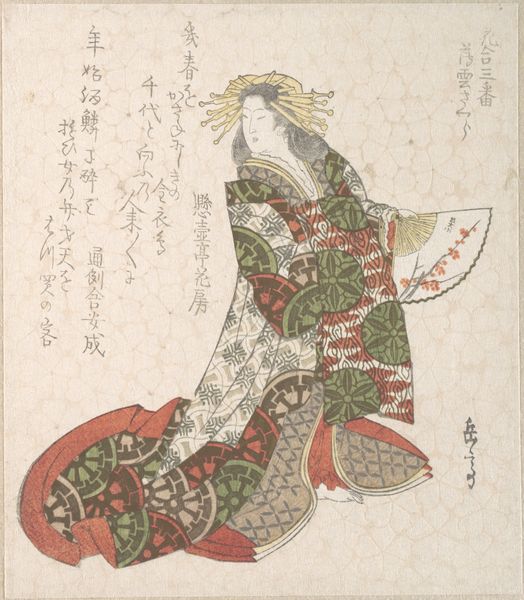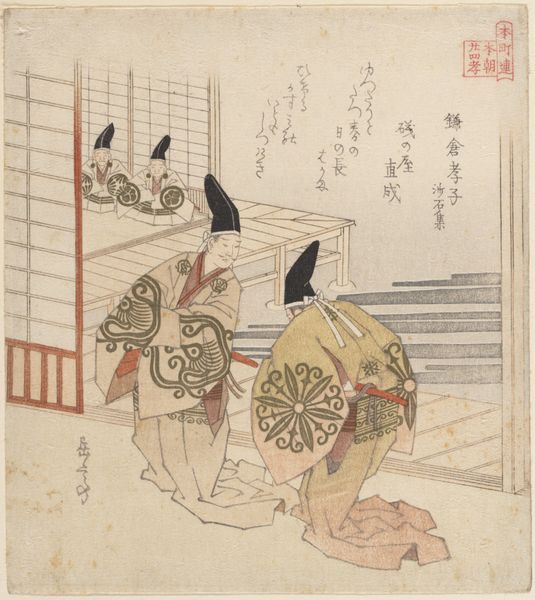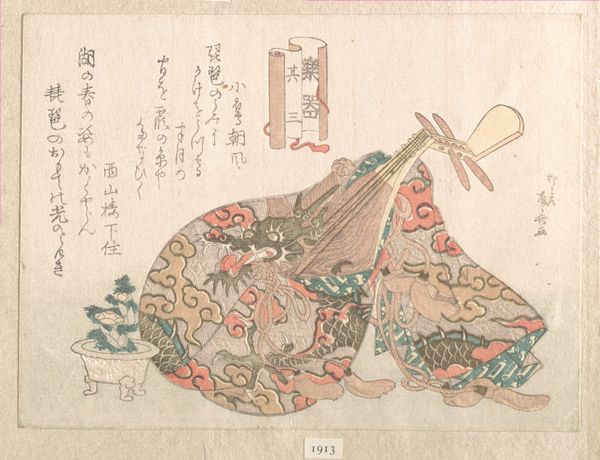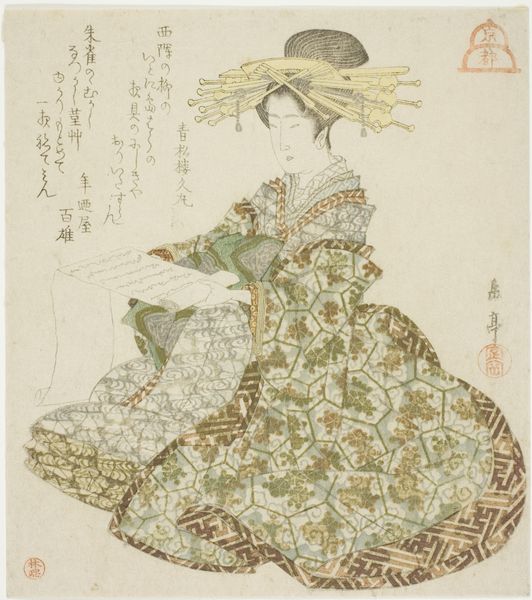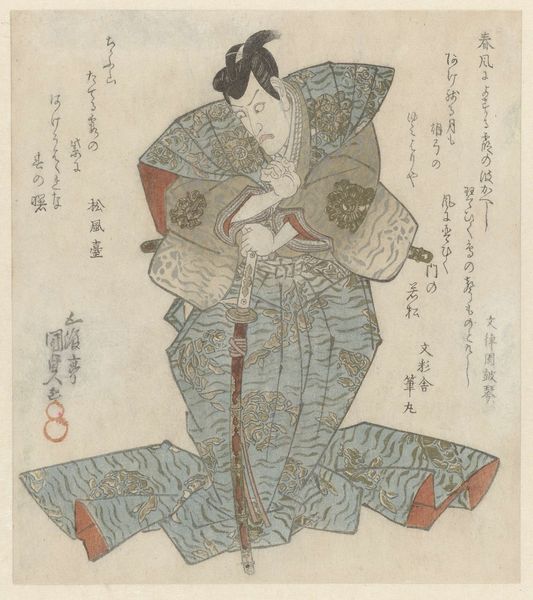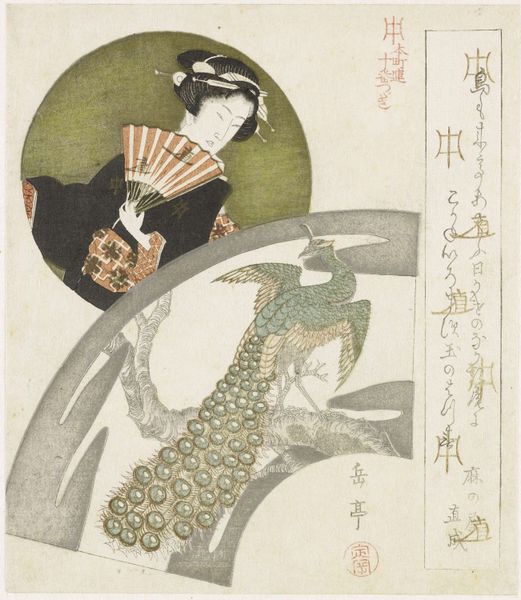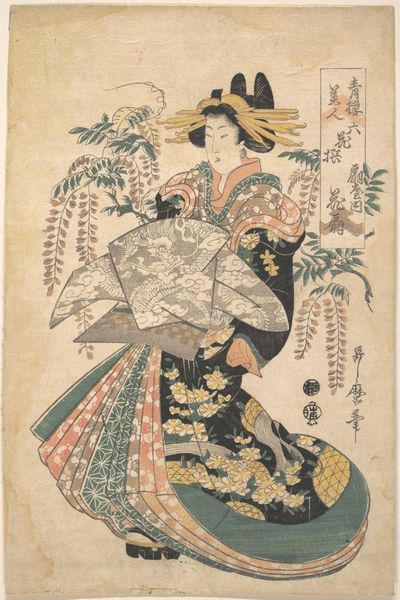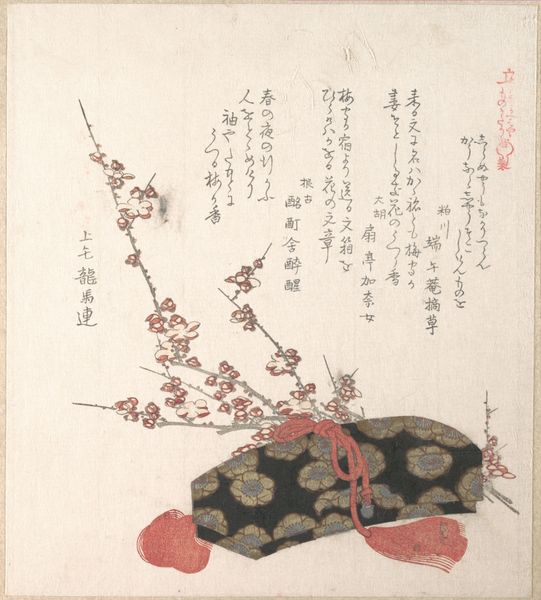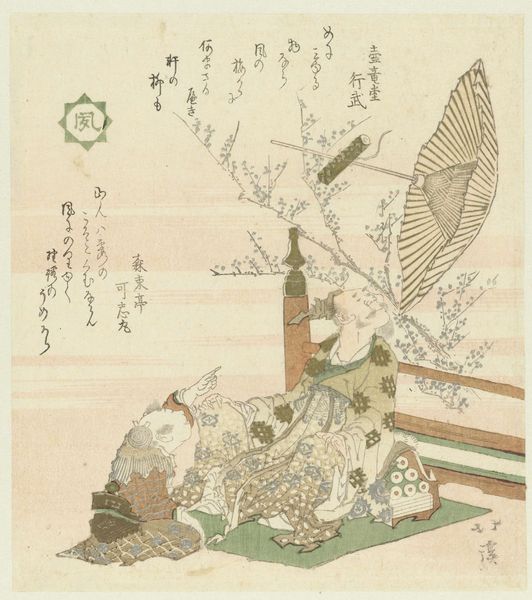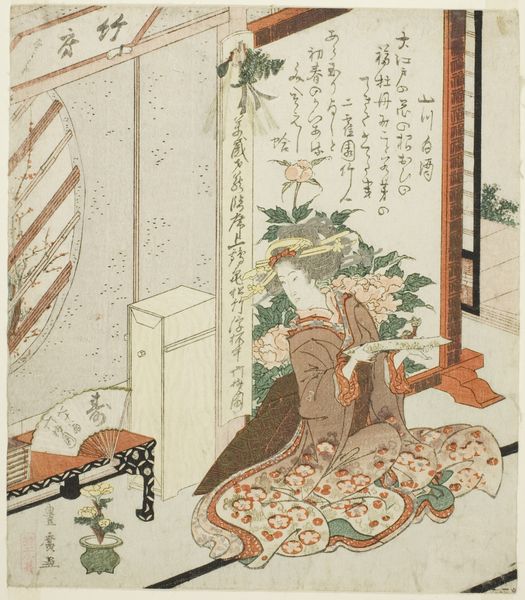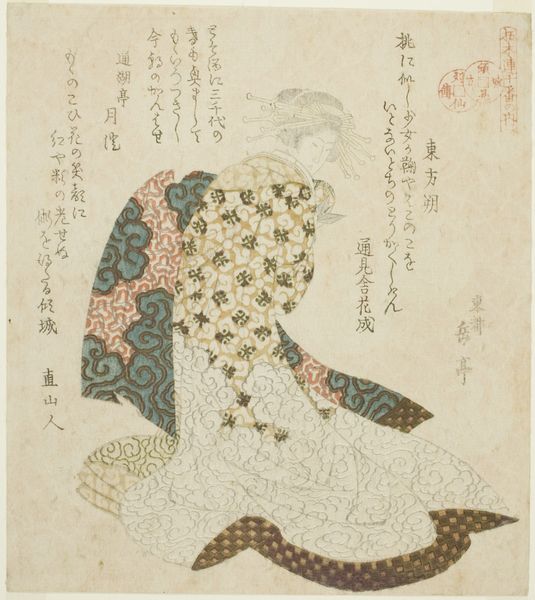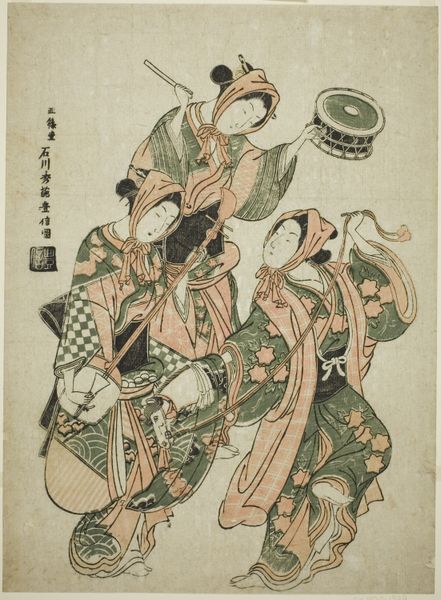
Princess Fujitsubo in Court Costume with a Fan 19th century
0:00
0:00
print, etching, woodblock-print
#
portrait
# print
#
etching
#
asian-art
#
etching
#
ukiyo-e
#
japan
#
figuration
#
woodblock-print
Dimensions: 8 7/16 x 7 3/8 in. (21.4 x 18.7 cm)
Copyright: Public Domain
Editor: Here we have Yashima Gakutei’s 19th-century woodblock print, "Princess Fujitsubo in Court Costume with a Fan," currently residing at The Met. The patterning is just incredible; so detailed, especially in the elaborate robes and the multiple fans at her feet. I’m wondering, as a historian, what stands out to you in this particular piece? Curator: This print is a fascinating example of how Ukiyo-e, while often depicting contemporary life, also engaged with classical literature. Fujitsubo is a character from *The Tale of Genji*. Seeing her depicted in such elaborate court attire reflects the enduring power of the Imperial court as a subject for art, even as its political power waned. Note how her downcast gaze and demure posture adheres to idealized representations of women within the context of Japanese court culture. Does the presence of poetry strike you as significant? Editor: Absolutely! It almost acts as another layer, like an inscription adding depth. It feels very deliberate. But doesn’t this almost mythologize a figure, transforming her into a kind of national ideal? Curator: Precisely! And it reinforces the public role of art in solidifying cultural values. Consider how prints like this, accessible to a wider audience, disseminated these ideals and participated in shaping societal norms and perceptions. To add on this, one aspect that always captures my eye are those miniature signature blocks: can you speak more on this? Editor: Hmm, they are very minute to not distract too much but seem crucial. The blocks, acting like author attribution, indicate that craftsmanship was a celebrated feat, similar to an award in the field of sports? Curator: The addition of one's name is key for Ukiyo-e since mass production means a certain level of 'detachment.' You've eloquently identified its crucial importance here. These pieces played a crucial function in codifying class structure through dress and accessories for the masses. I feel I've really gained a better appreciation of woodblock prints, and especially its position in time to spread Japanese cultural norms! Editor: I agree. Seeing how this piece played a role in solidifying norms makes me really see it differently now.
Comments
No comments
Be the first to comment and join the conversation on the ultimate creative platform.
